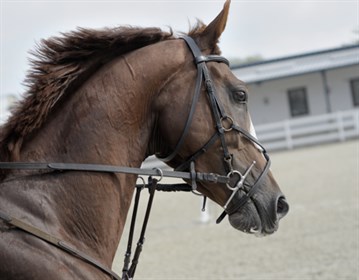|

|
Sponsored

By: Leslie Williamson, CEO of the NCTM, Senior Lecturer and SF4L Independent Equine Ergonomist
Horses behaviour is often described in various ways and attributed to various causes, let’s look at how an EMT student will reflect on this information in our classes..
As an EMT student or qualified EMT practitioner, understanding the physiology of muscle strain, injury and compensation allows you to also view the horse as a ‘whole’ when treating the horse with remedial or sports massage. We know the horse is quite co-operative by nature and that there are many reasons as to why there may be a lack of performance from horses being described as the following…
Cold backed, exhibiting negative facial expression, showing mannerisms under work such as tail-swishing, head throwing at the trot or canter transition, refusal or difficulty to rein back, show jumping refusal or hurdlers running off line on the track, out of character bucking, kicking out at leg aids, unwilling to work on the bit, uneven gaits and lameness to name a few.
If we observe, assess and aid in eliminating the obvious external reasons for discomfort and the variables, of how this contributes to the dysfunction of the horse like; saddle fit, other gear related issues, shoeing, teeth, inconsistent training, overfeeding/under feeding, horse’s age, rider’s expectations exceeding horse’s ability, conformation shortcoming, inept warming up and cooling down procedures, then regardless of these external issues being rectified instantly or over time, there is still a clear and essential need to address the underlying structures responsible for movement, stability and performance with the consideration and understanding that an EMT practitioner will provide you and your horse, to aid in the elimination of unnecessary pain, strain and compensation that continually inhibits your horse.
READ THE LATEST NEWS ARTICLES HERE

|

|
